Aval Kesari recipe is a sweet Indian vegan pudding made with poha during Janmashtami. This vegan dessert recipe is easy and quick to make. Serve this as neivedhyam for Janmashtami or as a dessert on any other festive occasion. It's a classic South Indian dish made vegan!
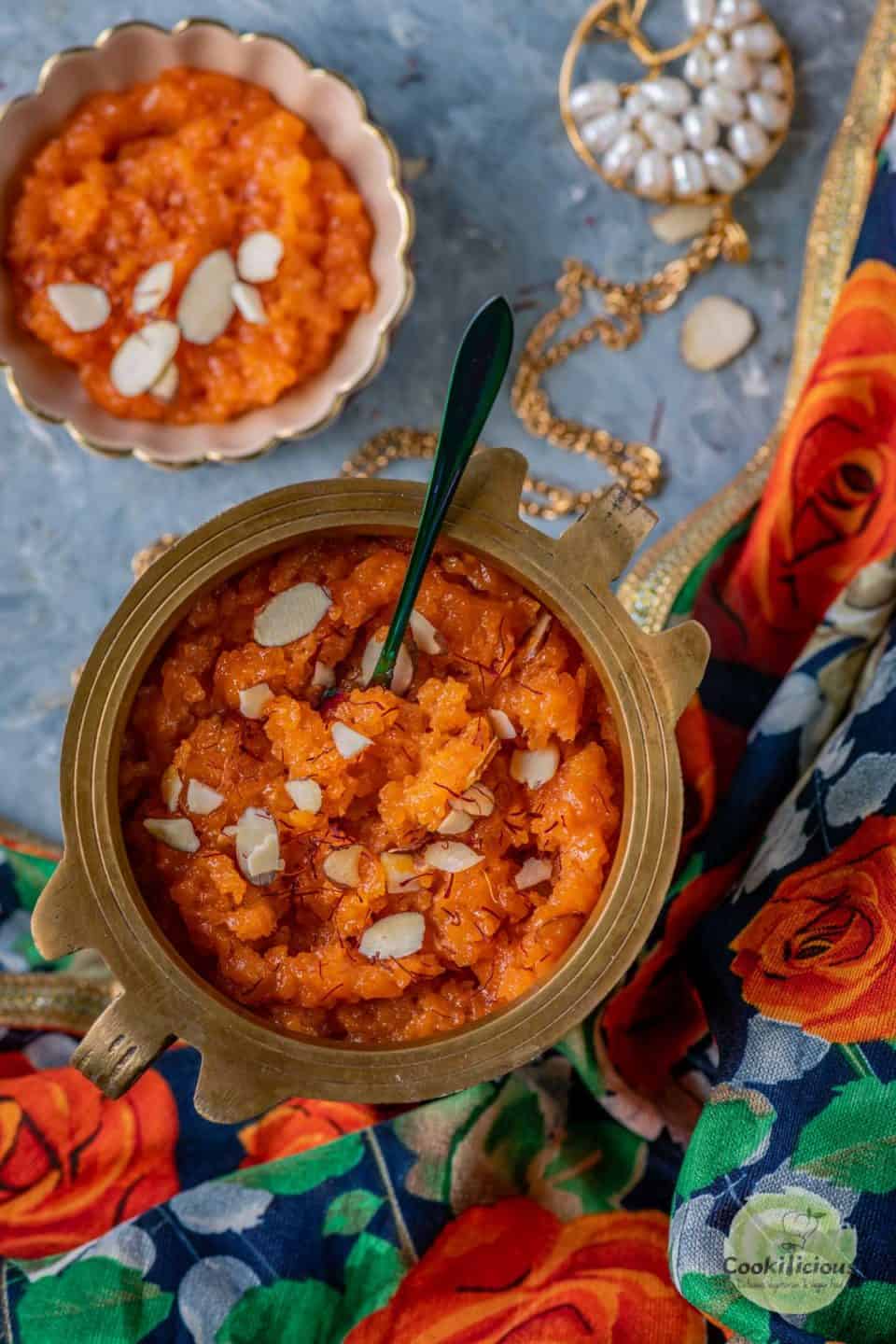
Jump to:
What is Janmashtami
Janmashtami, also known as Krishna Jayanthi or Gokulashtami, is a widely celebrated Hindu festival in India that marks the birth of Lord Shree Krishna. As the 8th Avatar of Lord Vishnu, Krishna is revered for his charisma, benevolence, and playful nature. Known for his childhood antics, especially his love for stealing curd and butter, Krishna holds a special place in the hearts of many, including mine. This festival is particularly meaningful to me as my niece, named after Krishna, adds a personal connection to the celebrations.
What is Kesari
Kesari is a popular South Indian delicacy traditionally made with rawa (semolina or sooji) and is known in some parts of India as Sheera. The name "Kesari" refers to its characteristic orange color, which often comes from saffron. This sweet dish is commonly prepared for joyful and festive occasions.
A unique variation of Kesari is made with poha (flattened rice) and is especially prepared during the Indian festival of Janmashtami (also known as Gokulashtami or Krishna Jayanthi), celebrating the birth of Lord Krishna.
This vegan dessert recipe goes by many names—Aval Kesari, Poha Sheera, Poha Kesari, or Poha Pudding. I love making it this way because it's how my mother-in-law prepares it, and I believe it's one of the simplest and most delicious versions. This popular South Indian vegan pudding comes together very quickly. Unless you're told, you'd never guess that this delightful dessert is made with beaten rice (poha).
What is poha
Poha (known as Aval in Tamil) is a staple in Indian cuisine, made from rice that is parboiled, flattened, and dried. Available in two varieties—thick and thin—and in white and red colors, poha is versatile. The thick variety becomes fluffy and absorbent when hydrated, making it ideal for snacks and breakfast dishes.
You can make Maharashtrian Kanda Poha or variations like Cilantro Poha and Tamarind Poha with it. The thin variety is often added to dosa or idli batters for smoothness. Poha is also used in making Poha Chiwda, an Indian trail mix. Easily found in Indian grocery stores and on Amazon, poha can last several months when stored in airtight containers.
Why make Aval Kesari for Janmashtami
Aval Kesari is a popular offering for Janmashtami because poha (beaten or flattened rice flakes) is believed to be one of Lord Krishna's favorite foods. In Indian mythology, there's a charming story that highlights Krishna's love for poha and his deep friendship with Sudama, which you can find online—it's a delightful read. Given its significance, poha is a staple in Indian kitchens and is often used in various dishes, especially during festivals like Janmashtami. You can also make Paal Payasam along with it.
Why make this
- A mouthwatering Indian dessert recipe
- It's got a soft, and chewy texture and is sweet to taste
- Quick and easy to make using basic ingredients
- It's a vegan dessert recipe that can also be made with just water and no milk
Ingredients needed 🧾

Poha or Aval is the key ingredient here. You can use thick or thin variety here since it's all going to get mashed up.
Sweetener - I make it using regular white sugar. But you can use any sweetener of your choice like jaggery, brown sugar, cane sugar, etc in this Kesari recipe.
Milk - Use plain unsweetened almond/oats/cashew milk for this recipe. You can also skip adding milk altogether and cook this in just water.
Other basic ingredients are orange food color (optional), sliced almonds, saffron strands, vegan ghee, or any neutral vegetable oil. You can also add cardamom powder.
Use a good quality non-stick pan to make this dessert because it will stick to the bottom of the pan when cooking.
How to make it 🔪
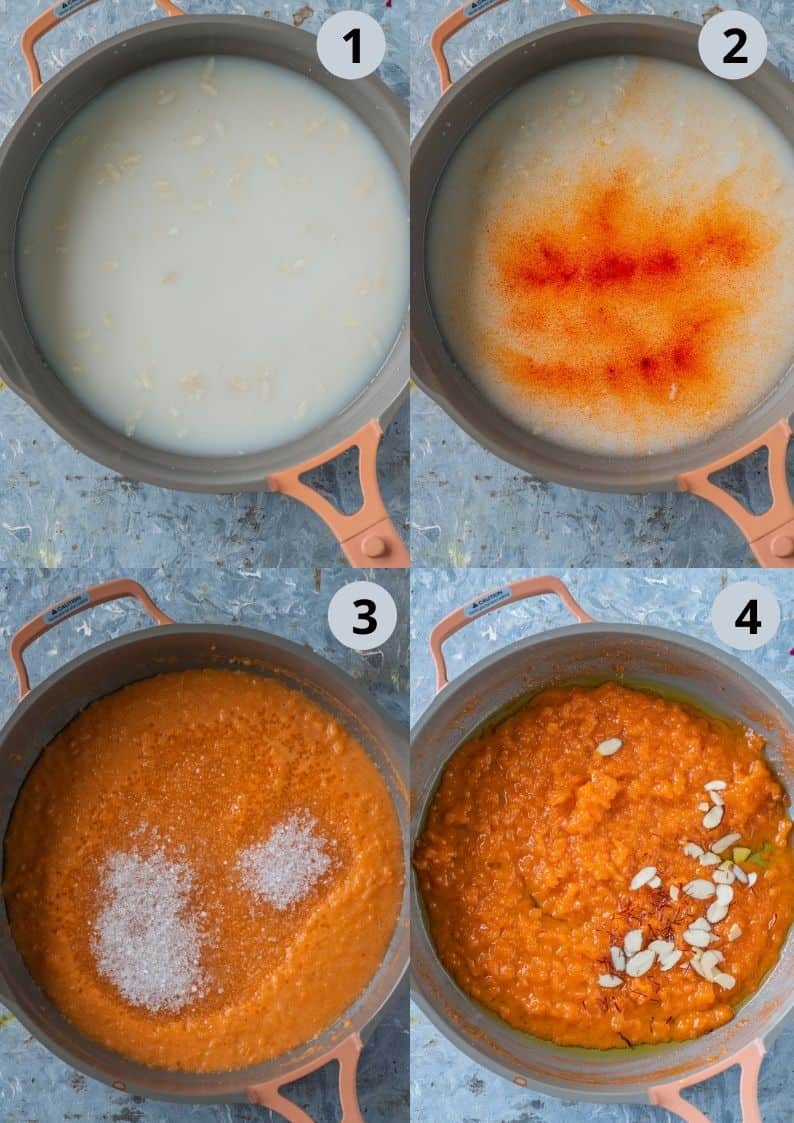
Want to save this recipe?
- In a pan
, add beaten rice, almond milk
, and water. There is no need to soak the poha prior.
- Add organic orange or yellow food color
to the pan. Keep stirring on medium flame till the poha softens and thickens. This could take 5-7 minutes.
- Gradually add sugar
to it, stir and let this mixture come to a boil. Keep stirring on medium flame and it will begin to thicken. Chef Tip - This could take 8-10 minutes. There should be no lumps formed. Keep scraping the sides of the pan as you stir. Once it stops sticking to the pan and comes together like halwa, add ghee
and continue to stir it for another minute.
- Chop some nuts
and keep saffron strands
ready. Take the pudding off the flame and garnish it with sliced almonds, and saffron strands. Chef Tip - Also add cardamon powder now, if you want. Mix it all well and take it off the flame.
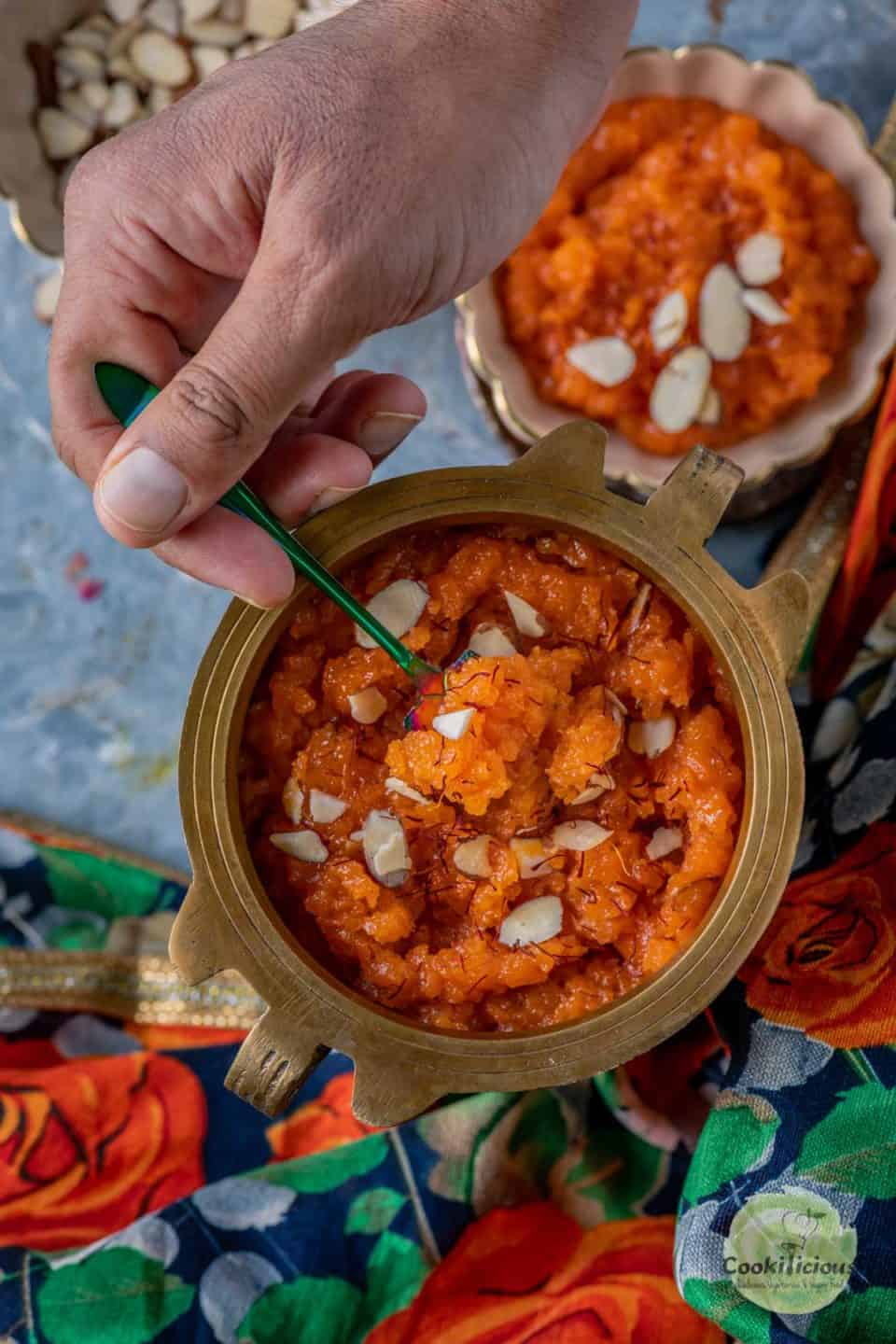
Serving suggestions 🍽
This vegan pudding will thicken as it cools, so feel free to drizzle some vegan ghee over it when serving. Aval Kesari can be enjoyed hot or cold and is traditionally served during Krishna Jayanthi or Janmashtami. However, it’s perfect for any festival or occasion, making it a lovely treat to share with friends and family.
If you're preparing this pudding for Gokulashtami, serve it alongside Curd Rice and Thattai. Another serving option is to grease a plate with ghee, spread the Kesari on it, and once it cools, cut it into your desired shapes before serving.
Top recipe tips 💭
Ensure the poha (aval) is fully cooked before adding sugar to achieve a soft texture. You can substitute sugar with alternatives like brown sugar, jaggery, or cane sugar.The ideal poha-to-liquid ratio is 1:2. Adding food color is optional. You can use natural options like turmeric or skip it entirely for a plain white Kesari. For garnish, consider adding ghee-fried cashews and raisins. If you're not vegan, regular ghee will enhance the dish with a rich, aromatic Indian flavor.
Recipe FAQs 📖
Thick or thin, white or red poha can be used in this Kesari recipe. Poha can be dry roasted first before being used. You can also coarsely grind it to get a smoother texture.
You can store the Aval Kesari in the fridge for up to a week. It can be kept in the freezer as well for 1-2 months. But it's best made and consumed fresh.
More vegan desserts
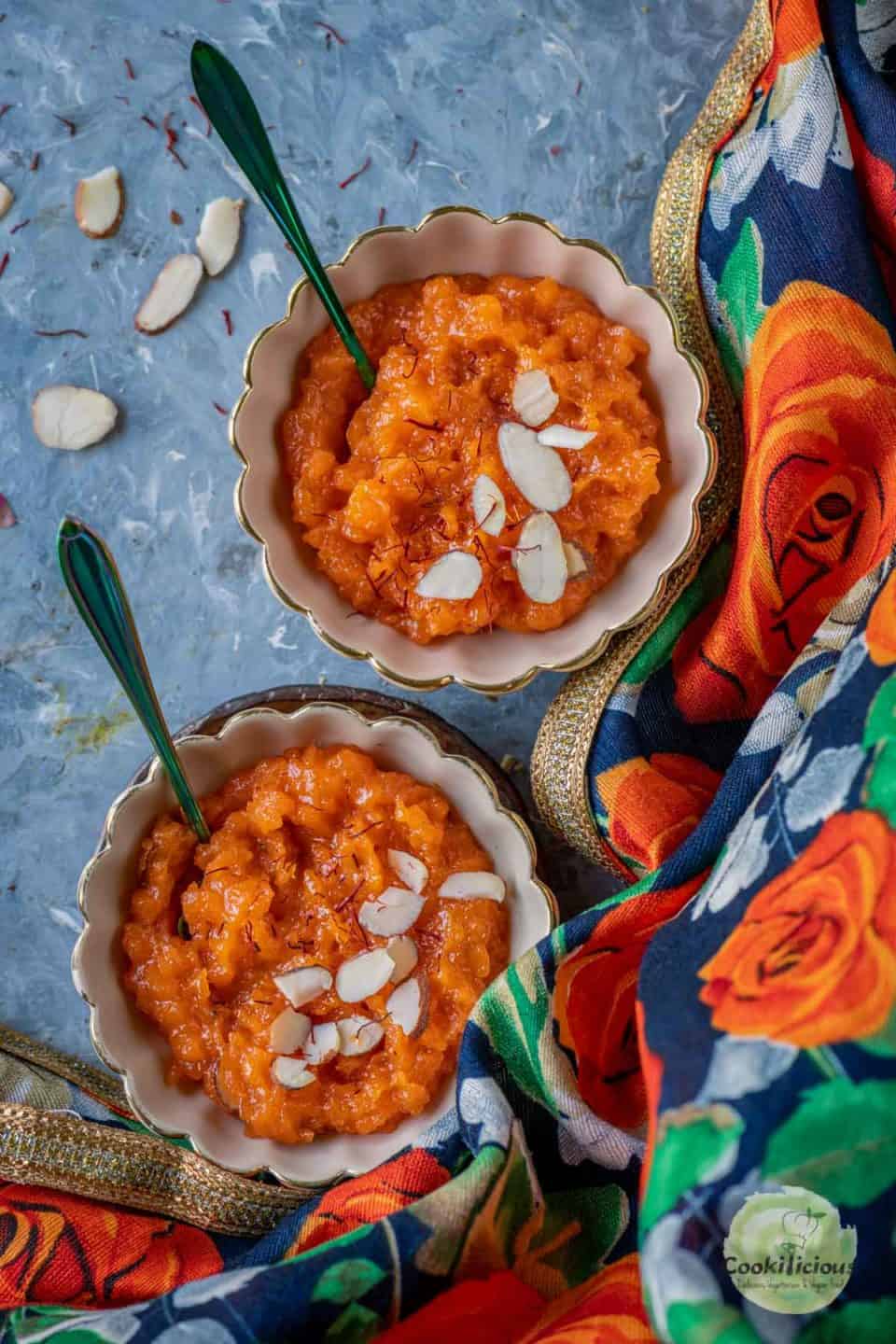
⭐️ Subscribe to the Cookilicious Newsletter and receive new recipes straight to your inbox! You'll receive my FREE Vegan Beginner's guide as a gift. Ready to elevate your cooking game? Purchase my Cookbook - The Essential Vegan Indian Cookbook today!
Recipe 📖
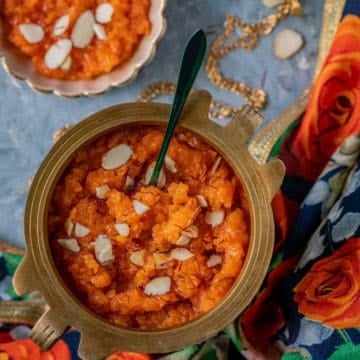
Aval Kesari | Vegan Flattened Rice Pudding
Equipment
Ingredients
- 1 cup poha
- 1 cup unsweetened almond milk
- 1 cup water
- Pinch orange color
- ¾ cup sugar
- 2 tablespoon vegan ghee
- 2 tablespoon sliced almonds
- ½ teaspoon saffron
Instructions
- In a pan, add beaten rice, almond milk, and water. There is no need to soak the poha prior.
- Add organic orange or yellow food color to the pan. Keep stirring on medium flame till the poha softens and thickens. This could take 5-7 minutes.
- Gradually add sugar to it, stir and let this mixture come to a boil. Keep stirring on medium flame and it will begin to thicken.
- This could take 8-10 minutes. There should be no lumps formed. Keep scraping the sides of the pan as you stir.
- Once it stops sticking to the pan and comes together like halwa, add ghee and continue to stir it for another minute.
- Chop some nuts and keep saffron strands ready. Take the pudding off the flame and garnish it with sliced almonds, and saffron strands.
- Also add cardamon powder now, if you want. Mix it all well and take it off the flame.

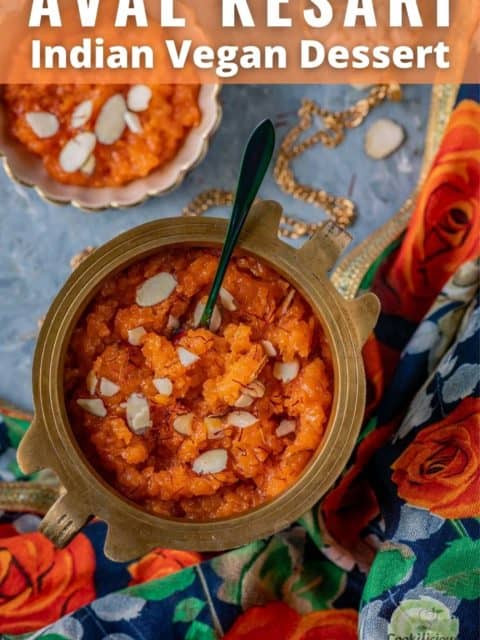
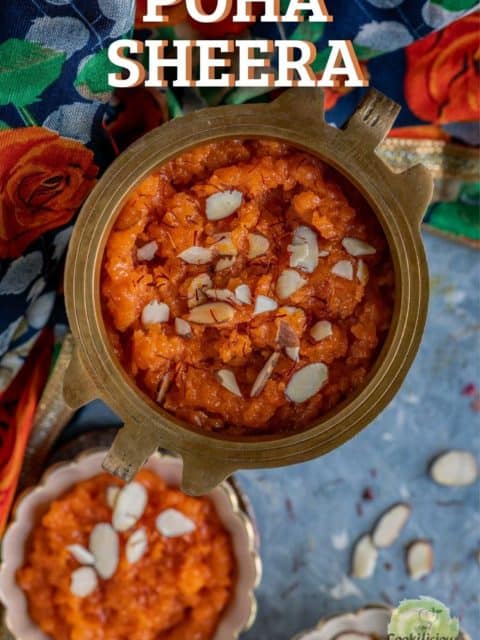
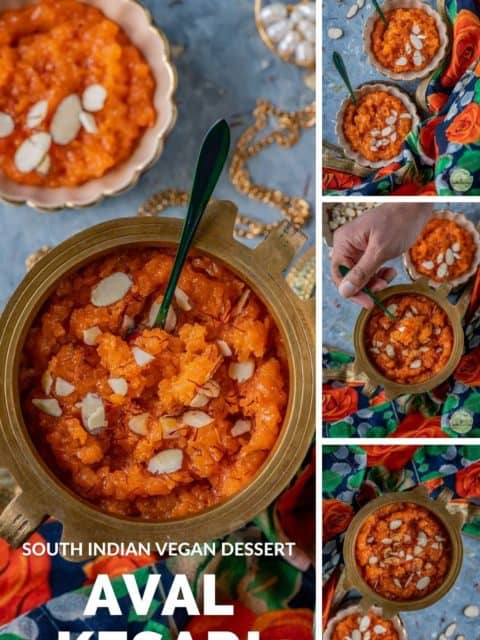
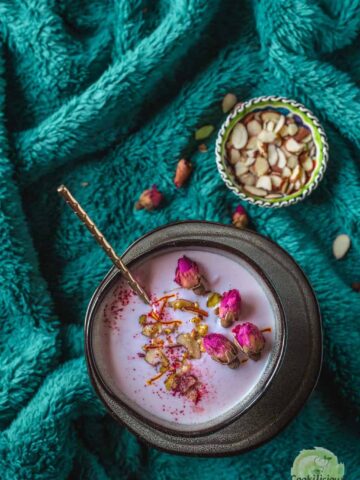
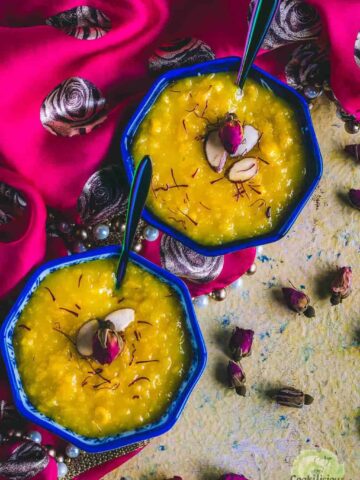
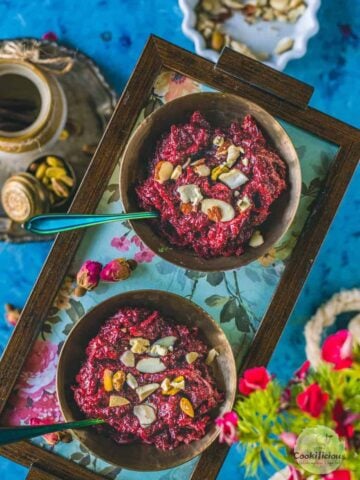
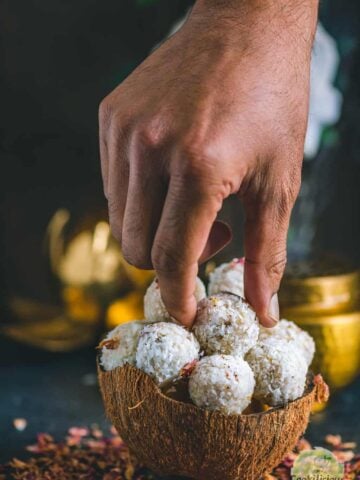
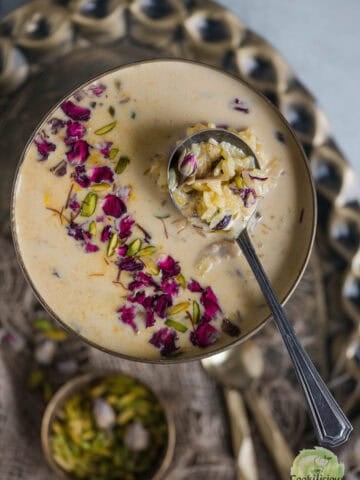
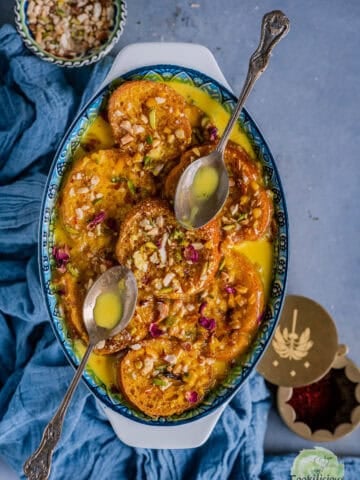
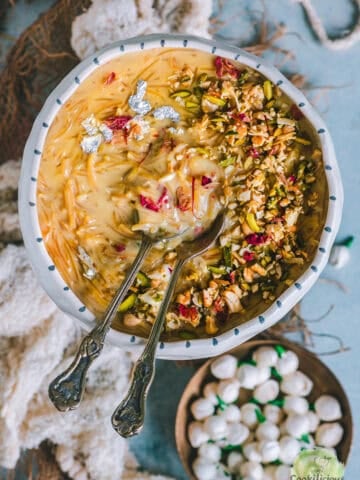
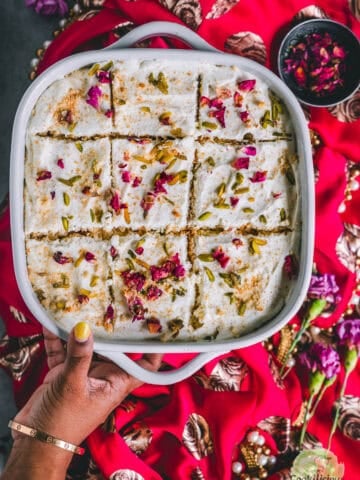
Retro Relish says
Delicious recipe… I will try this recipe for sure… Thank you for sharing.. 😊
Priya says
Thank you so much.
Jen says
I already have all of the other ingredients in my pantry, and now that I know what Poha is I'm looking forward to buying it on my next trip to my local Indian grocer and trying this recipe. Thanks for teaching me something new!
Priya says
Thank you so much.
Andrea says
Such a pretty and flavorful dessert! I can't wait to taste this!
Priya says
Thank you.
Beth says
I love the use of saffron in this yummy dessert. It is such a wonderful spice!
Priya says
Yes, indeed. Thank you
Alison says
The bright orange color is so beautiful! This looks like a delicious dish to prepare. I can't wait to try using poha for the first time!
Priya says
Do give it a try. Thank you.
Vicky says
I love traditional rice pudding, but have never tried this version before. Love how you found a way to make it vegan!
Priya says
Yes, glad you liked it. Thank you.
Kathryn says
Yumm! I've never heard of this before, so thank you for educating me. It looks so tasty!
Priya says
Yes, do give it a try..thank you
Shadi Hasanzadenemati says
I'm making this for the weekend, I bet everyone is going to devour it!
Priya says
yay!! thank you
Dannii says
This looks like an amazing sweet treat. So many delicious flavours.
Priya says
thank you so much